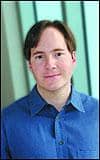Lea Nesbit, the CEO and founder of Lingualcare, describes the advantages of the iBraces system.
OP: What does your company offer patients that they can’t get with traditional lingual braces?
Nesbit: Our iBraces are so different from any other lingual braces on the market, we hesitate to even call them “lingual braces.” iBraces are 100% customized with each patient’s unique prescription built in, and the bracket pads are adapted to the patient’s unique dental anatomy. They are very comfortable to wear, and most patients have little, if any, speech interference. The real benefit, though, is to orthodontists. They now have an invisible appliance system that they can use to treat almost any type of malocclusion, and they don’t have to worry about bracket placement or wire bending. It is all done for them in our laboratory.
OP: How can orthodontists get certified to use iBraces?
Nesbit: We offer online certification, in-office certification, and classroom courses across the United States. We are very fortunate to have orthodontists like Cliff Alexander and Neil Warshawsky, who together have treated more than 200 patients with iBraces, out there teaching our courses.
OP: What’s the difference in cost between iBraces and standard labial braces?
Nesbit: iBraces have a higher up-front expense because they are 100% customized for each patient in our laboratory. In reality, all appliances are customized—either in a laboratory or by the doctor at chairside, when he bends wires and repositions brackets. If you take into account the time a doctor spends customizing an appliance, then the cost is relatively close.
OP: What’s next at LingualCare?
Nesbit: We are introducing a new generation of iBraces later this year and have two new labial products to introduce in the spring. We are rolling out a new consumer-marketing program that will greatly benefit all of our current and future doctors.
Always Expanding
Arlen Hurt graduated from Indiana University in 1984 with a degree in dental laboratory technology. He went right to work at Specialty Appliances and has been there ever since, eventually working his way up to vice president.
OP: What products does Specialty Appliances make to support your Herbst appliances?
Hurt: Specialty Appliances is best known for manufacturing traditional Herbst components, as well as the new telescoping mechanisms. We also manufacture several pliers and advancement shims for the Herbst. Some of our newest items are shims that can be placed on telescoping or traditional mechanisms without removing the Herbst components intraorally.
We have also designed special pliers to crimp all shims easily into place. These shims and pliers reduce the chairtime for advancing the Herbst. Another new offering is the applecoreTM screw, which can be used on all types of Herbst appliances. The applecore screw gives the patient much more lateral movement than the traditional screws and pivots that are used with the Herbst. This is very important not only for patient comfort but also to reduce the stress placed on the Herbst appliance during lateral movements.
OP: What other new products are you offering orthodontists?
Hurt: Earlier this year, we started selling a new expansion screw that we invented and manufactured, called the RESTM or Ratcheting Expansion Screw. This screw solves some problems that can occur during the arch-development stage of orthodontic treatment. The screw locks into place each time it is activated, preventing it from backing up. This is generally caused when the parent accidentally turns the activation key backward when removing it from the screw, or by reactive forces from the alveolar process.
One of the greatest features is not only that the screw locks but that it clicks when it is activated. This click lets the parent and patient know that the screw has been activated and will not turn back when the key is removed. The screw is also very small, so it can be used on the upper and lower arches.
OP: How do you help train orthodontists to use your products?
Hurt: Specialty Appliances has offered training videos and manuals for Herbst appliances and indirect bonding for several years.
We are the only orthodontic laboratory that I know of that has invested these resources into developing videos that can be used by both the orthodontist and staff. These videos reduce the learning curve of implementing a new technique into an office.
Another great resource is the knowledge that we offer only a phone call away. We not only understand the laboratory environment, but we also work hard to understand the clinical application of the products that we manufacture.
OP: What’s next at Specialty Appliances?
Hurt: We are currently developing several new products that we hope to make available in the coming months. These products have been developed with the purpose of increasing a doctor’s efficiency.
We are also dedicated to continuously improving our manufacturing processes so that we maintain our goal of offering high-quality appliances to our customers and the orthodontic industry. We will also be expanding our line of products and laboratory appliances.



